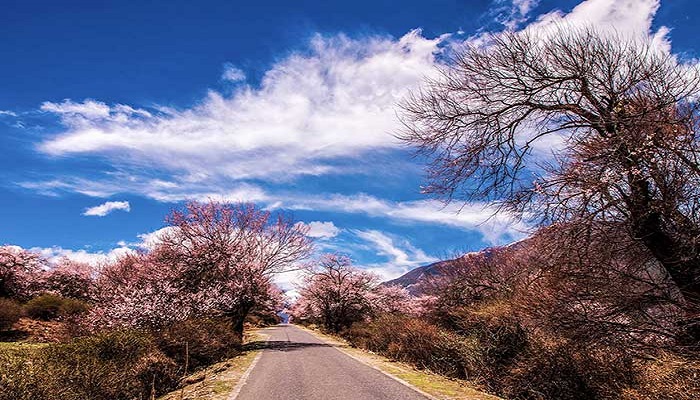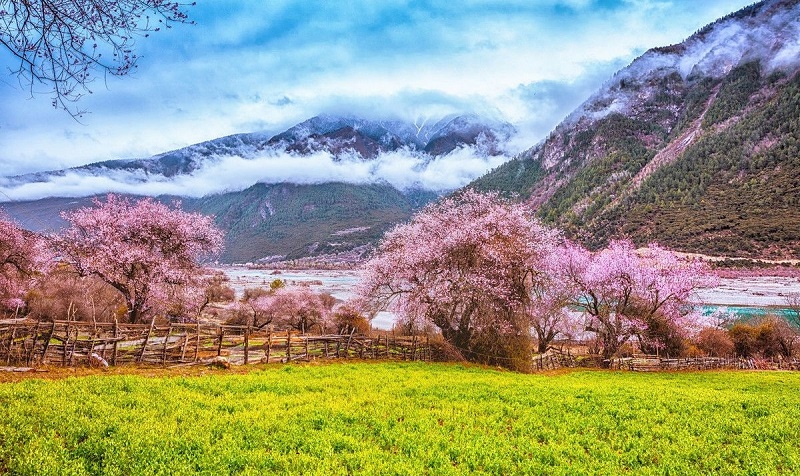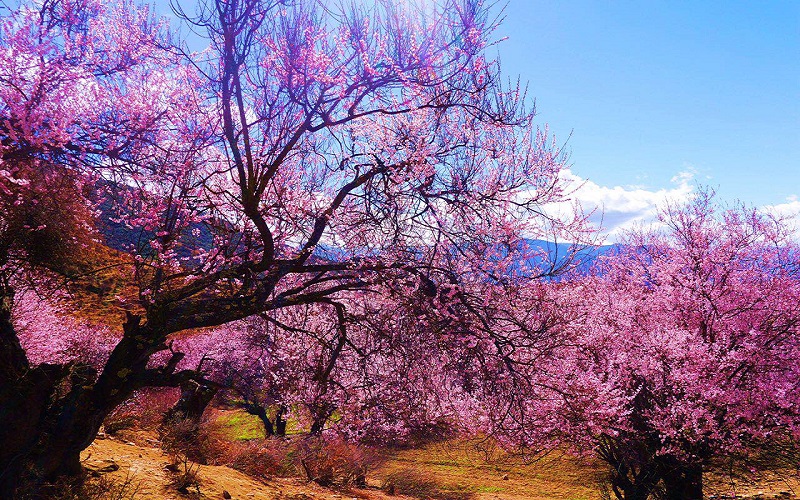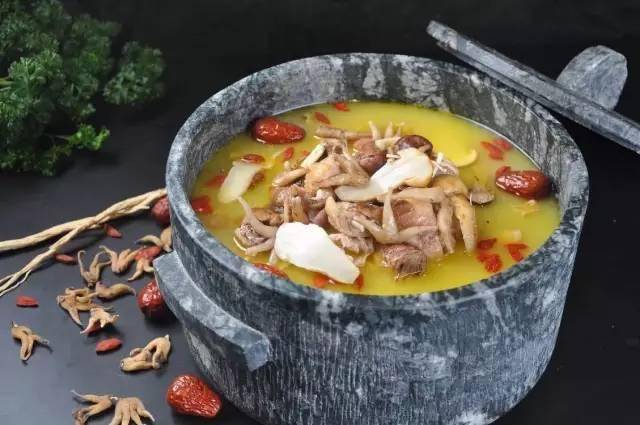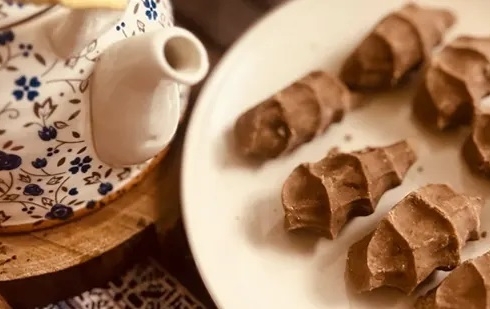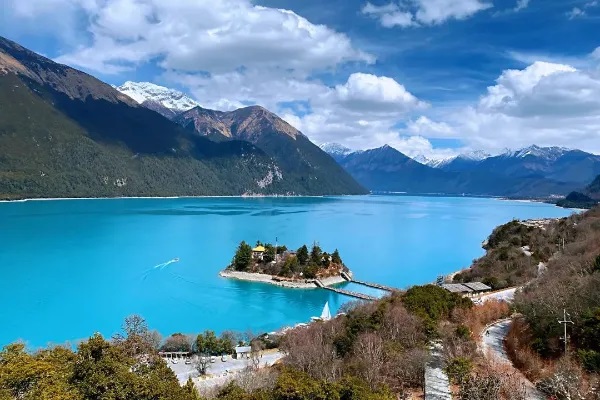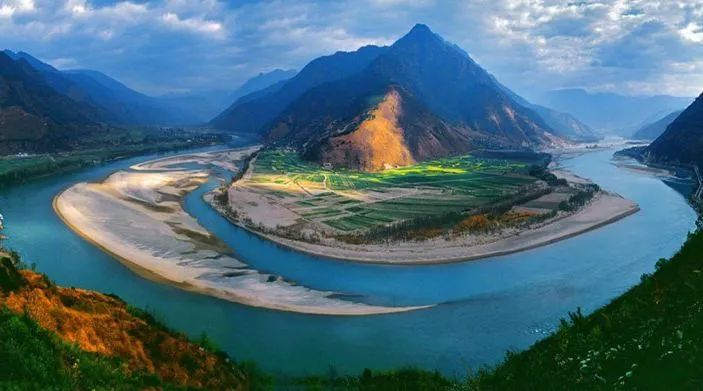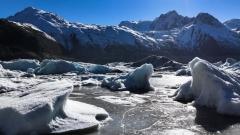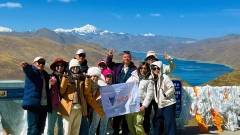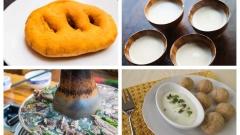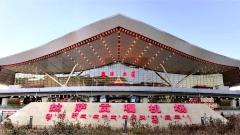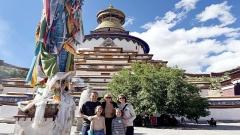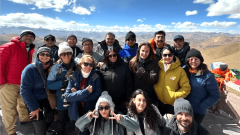Spring in Tibet is a revelation: snow still crowns far-off peaks while low valleys begin to glow in pink. Nowhere is that contrast more romantic – and more photogenic – than Nyingchi, the southeastern “garden” of Tibet where peach blossoms erupt into a short-lived sea of pink every year. If you’re planning an international trip in spring 2026, this guide walks you through everything you need to know to see the Nyingchi Peach Blossom Festival at its very best: when to go, where to shoot, how to get there, what to pack, safety and health notes, food and culture, suggested itineraries, and practical booking tips.
Why Visit Tibet Nyingchi in Spring
Nyingchi is often described as “Tibet’s little Jiangnan” — a poetic way to say it’s greener, lower and gentler than the high plateau most travelers imagine. In spring the valley floors, riverbanks and farming terraces are studded with peach trees that burst into blossom for a few intense weeks. The visual effect — pink canopies framed by still-snowy mountains — is cinematic: photographers, birdwatchers, nature lovers and cultural travelers all find something here.
Beyond the obvious beauty, the festival is an opportunity to experience Tibetan community life at close range. Local villages host singing and dancing, Tibetan opera excerpts and handicraft displays. For many visitors, the blend of rural festival atmosphere and grand landscape is the festival’s charm: you’re not only looking at flowers, you are stepping into how spring is celebrated by people who live in this unique environment.
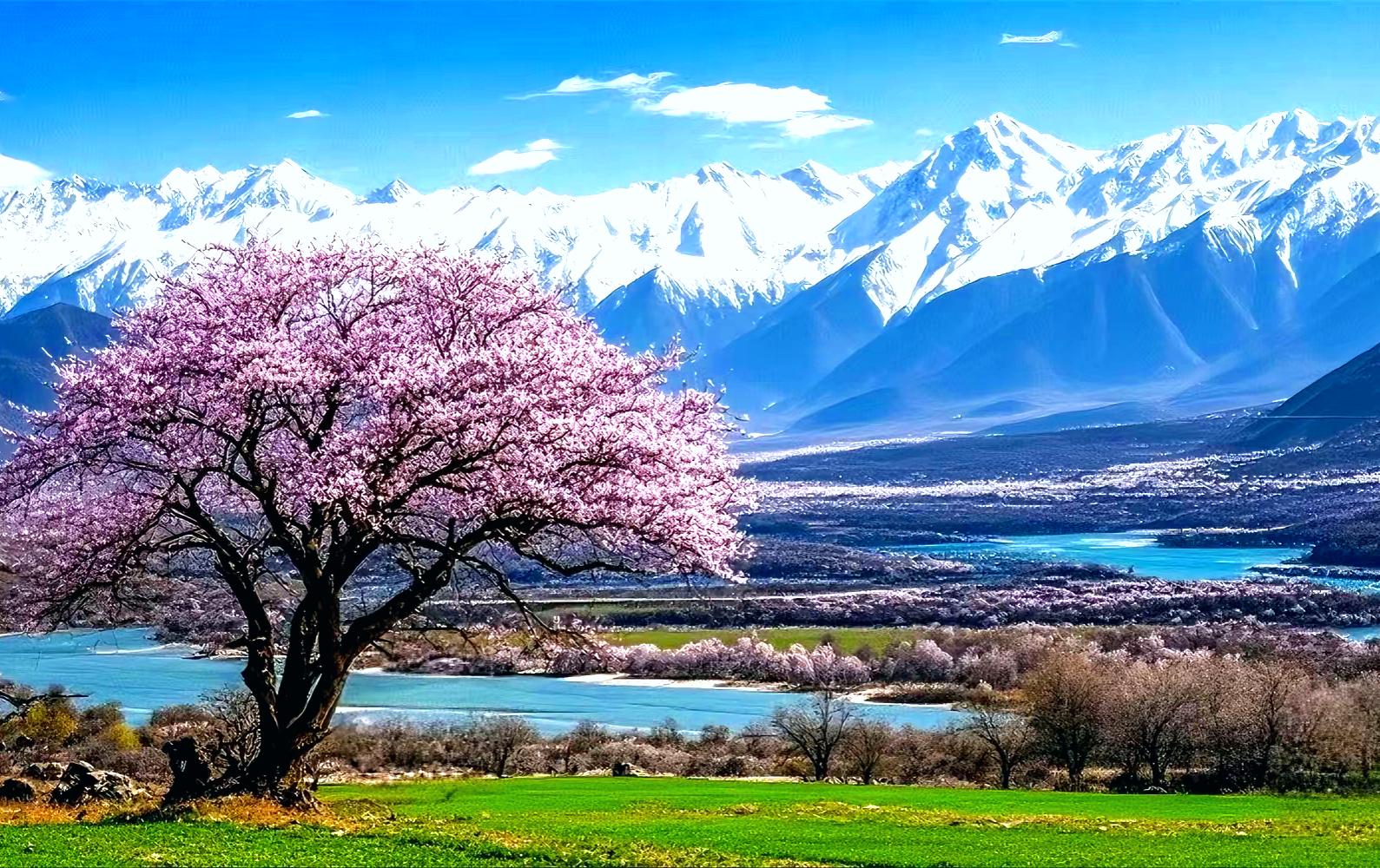
Nyingchi Peach Blossom
Best Time to Go to Tibet Nyingchi – May to April
Timing is everything. Peach blossom windows vary year to year because bloom depends on winter temperatures and the speed of spring warming. Based on recent patterns and official festival calendars, the general flowering period for Nyingchi runs from mid-March through mid/late April, with the best viewing often between late March and the first half of April. Many local travel guides recommend targeting roughly March 25 to April 10 for the highest chance of seeing full bloom across Gala Valley and neighboring peach corridors.
If you can be flexible by a few days you’ll increase your odds. Keep an eye on live bloom reports from tour operators or local tourism sites as March approaches — they usually post peak-flower updates every season.
Where To See the Peach Blossoms – Top Spots
Gala Peach Blossom Village — The Main Venue
Gala Village sits just a few kilometers from Bayi Town and has become the festival’s most famous stage. The valley here is thick with large, old peach trees, a winding river and pastoral meadows, all set beneath towering peaks. It’s the place where official opening events and many local performances are concentrated, which makes it lively and convenient for visitors based in Bayi. Gala’s bloom window can be slightly earlier than pockets farther east — plan accordingly.
Bomi Peach Blossom Valley — The Long Corridor
Bomi Peach Blossom Valley is famous for its long stretches of peach trees that can carpet river flats and roadside terraces for dozens of kilometers. This area feels more wild and expansive than Gala; blossoms often line the roads, so you can enjoy dramatic drives with pink tunnels and framed views. Some tour routes here are designed specifically for photographers who want the long-valley, layered-composition shots.
Suosong Village — Peak + Canyon Views
Suosong Village is beloved because its peach trees sit under the gaze of the legendary Namcha Barwa. From vantage points around Suosong you can capture both the blossom foreground and the jagged snowline of high peaks — a powerful composition for landscape photographers.
Smaller Villages & Secret Corners
Scattered hamlets and roadside orchards around Bayi and in the surrounding valleys often produce intimate, low-crowd scenes: single gnarly trees by stone houses, blossoms reflected in irrigation channels, or blossom-strewn terraces. If you like quiet exploration, ask a local guide to drive you off the main routes for golden-hour portraits.
Getting to Tibet Nyingchi – Routes and Practicalities
Fly Into Nyingchi Milin Airport
The fastest way for international visitors to reach Nyingchi is to connect via major Chinese hubs (for example Chengdu, Chongqing or Lhasa) and fly into Nyingchi Milin Airport (IATA: LZY). The airport sits low for Tibet — roughly 2,949 meters — which helps with acclimatization and makes Nyingchi one of the easiest first stops in Tibet for dealing with altitude. Flights from Chengdu and Chongqing are common during the spring season. The airport sits in a steep river valley and is known for its dramatic approach; weather can sometimes affect schedules so it’s smart to plan buffer days.
Overland Options
If you prefer overland travel, long scenic drives from Lhasa or Sichuan are possible but take much longer and require multi-day planning. Roads in spring are generally passable but weather and high passes (e.g., Mila Pass on routes toward eastern Tibet) may still be cool and occasionally snowy.
Local Transport & Distances
Gala Village is just a short drive (roughly 5–10 km) from Bayi Town, making Bayi a convenient base. Gala is about 30–40 km from the airport by road, depending on route, so transfers are straightforward when scheduled in advance. Bomi and other valleys require longer drives, often with winding mountain roads.
Photography Tips – How to Capture the Best Shots
- Golden Hour Magic: Shoot at sunrise or late afternoon when warm light bathes blossoms and the mountains can pick up color.
- Layer Your Composition: Use blossom-filled foregrounds with midground rivers and distant snowy peaks to create depth.
- Scale & People: A person in local costume or a small tea hut adds scale and human interest. Ask permission before photographing individuals.
- Weather Variability: A clear blue day gives contrast; soft overcast light can deliver painterly, even exposures. Both are beautiful — be ready for either.
- Lenses: Bring a wide angle for landscapes and mid-telephoto for mountain compression and blossom details. A fast prime helps with low light in village interiors.
- Drones: Rules for drones vary. In China and especially in sensitive regions, drone use can be restricted. If you plan to fly a drone, check current local regulations and get permits where required.
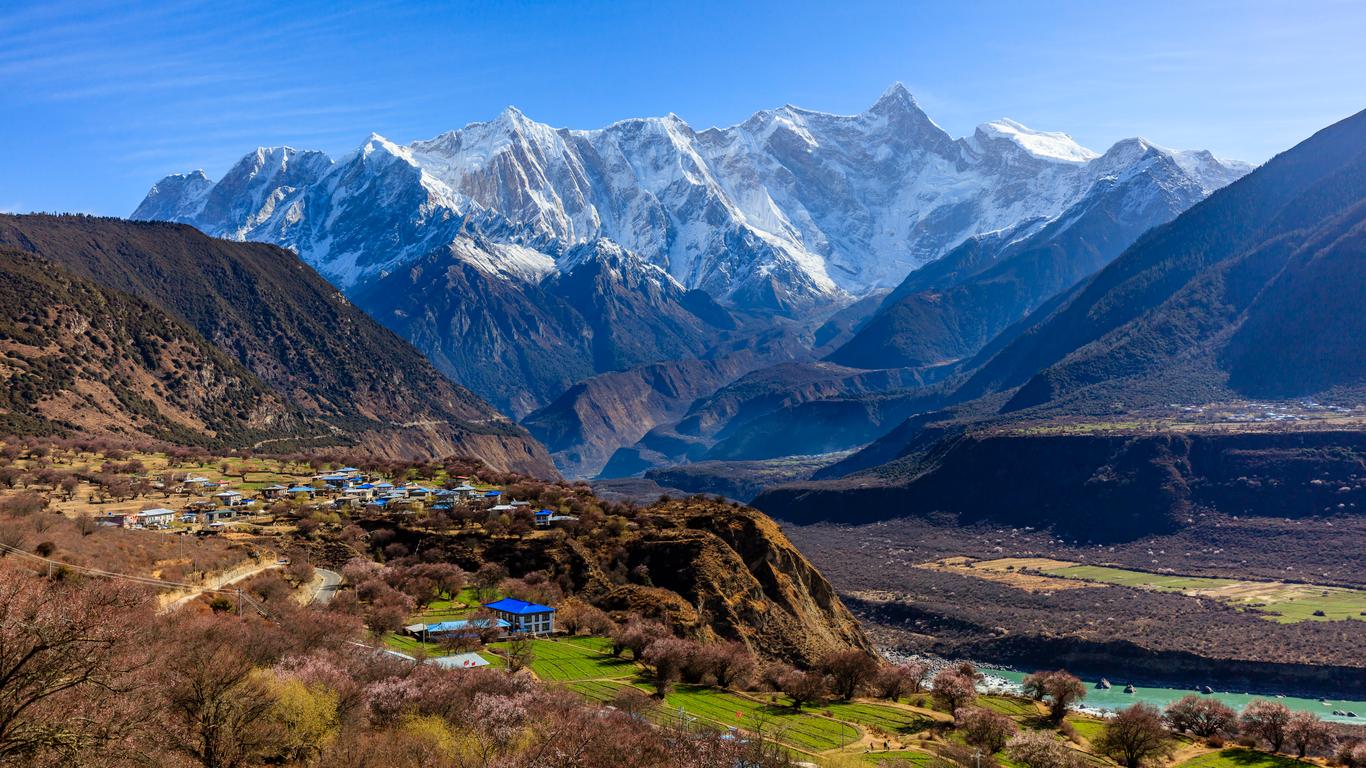
Nyingchi Peach Blossom
Special Food to Try – Local Flavors in Nyingchi
Nyingchi’s climate and geography produce a local cuisine that blends Tibetan staples with valley abundance. Must-try items include:
- Rulang Stone-Pot Chicken: A local specialty of Luolang — chicken slow-cooked in a mica/stone pot with herbs and mushrooms. It’s rich, warming and often served family-style for groups. In some tourist restaurants a whole pot for 8–10 people is priced around the equivalent of mid-range dining budgets, but it’s a memorable shared meal.
- Tsampa & Butter Tea: Classic Tibetan staples — don’t miss a taste of local barley flour dishes and the ubiquitous butter tea.
- Local Produce: Spring vegetables, river fish and locally grown fruits (including early peaches) are often served fresh.
Health & Altitude Advice of Tibet Nyingchi
Though Nyingchi is lower than the high Tibetan plateau, you’re still near 3,000 m in many places. Common-sense precautions:
- Acclimatize: Allow at least a day of light activity on arrival before strenuous hikes. Nyingchi’s lower altitude reduces risk, but take it slowly.
- Hydrate & Rest: Drink water frequently, avoid heavy alcohol for the first day or two.
- Medication: If you’re prone to altitude issues, consult your doctor about prophylactic medication.
- Watch Weather: Spring can shift rapidly from warm sun to chilly wind; pack layers.
Tibet Nyingchi Peach Blossom Festival 2026 Itineraries
13-Day Tibet Peach Blossom Tour: Bomi, Nyingchi, Lhasa, Namtso & EBC
- Days: 13
- Departure: Chengdu
- Brief itinerary: Nyingchi, Peach Blossom Valley, Midui Glacier, Ranwu Lake, Potala Palace, Jokhang Temple Barkhor Street
- Fees: Flights from Chengdu to Nyingchi and Xining to Chengdu; soft sleeper train from Lhasa to Xining; All sightseeings listed in the itinerary
11-Day Tibet Peach Blossom Tour: Nyingchi, Lhasa, Yamdrok Lake & Shigatse
- Days: 11
- Departure: Chengdu
- Brief itinerary: Nyingchi, Basomtso Lake, Lhasa, Yamdrok Lake, Shigatse, Tingri, Tashilunpo Monastery
- Fees: Flights from Chengdu to Nyingchi and Xining to Chengdu; soft sleeper train from Lhasa to Xining; All sightseeings listed in the itinerary
Accommodation & When to Book Tibet Nyingchi Peach Blossom Festival Tour
Festival season draws domestic and international demand. Bayi Town has the widest range of options (from guesthouses to comfortable hotels). If you prefer to stay inside a blossom valley for sunrise access, book guesthouses or homestays early — they fill fast. Aim to confirm flights and accommodations 2–3 months ahead for peak March–April weeks, and earlier if you travel with a large group or require special permits.
Other Nearby Tibet Nyingchi Attractions
If you have time, combine the Peach Blossom Festival with eastern Tibet highlights:
- Basongcuo Lake: A serene highland lake with shore trails and small monasteries.
- Mila Mountain Pass: A dramatic high pass on routes to Lhasa (if you’re continuing west).
- Yarlung Tsangpo Grand Canyon: One of the planet’s deepest canyons — invite awe and excellent landscape opportunities.
- Mila and Lhasa Connection: Many travelers use Nyingchi as part of a larger eastern Tibet circuit that includes Lhasa and Shigatse.
Packing Checklist for Tibet Nyingchi Peach Blossom Festival Tour
- Layered clothing: base layer + fleece + insulated jacket + windproof shell.
- Good walking shoes and lightweight waterproof boots.
- Sun protection: hat, sunglasses, SPF sunscreen (mountain sun is strong).
- Lightweight daypack, water bottle, camera gear and extra batteries.
- Small first-aid kit, altitude medications (if prescribed), basic toiletries.
- Local currency (RMB) and passport copies.
Final Booking Tips & How to Maximize Your Tibet Nyingchi Peach Blossom Festival Tour
- Flexible Booking: Because bloom dates shift, work with a tour operator who offers flexible dates or last-minute adjustments based on bloom reports.
- Local Guide: Hire a local guide for insider timing, the best photo vantage points, and cultural translation — their knowledge can turn a good trip into a great one.
- Early Starts: Be ready for early mornings. Golden hour in blossom valleys is often the most magical and least crowded time.
- Festival Programs: Check the festival schedule (performance dates, exhibitions, opening ceremonies) before you travel so you can time your stay for events that interest you.
Nyingchi’s Peach Blossom Festival is a concentrated experience of color, culture and landscape. With proper timing (late March to early April is usually best), a few days in Bayi plus excursions to Gala, Bomi and Suosong, you’ll see why photographers and culture travelers flock to this corner of Tibet every spring. Whether you’re chasing sunrise light across hundreds of pink trees or tasting Rulang stone-pot chicken in a family courtyard after a day of exploration, the festival offers layers of experiences that stay with you long after petals fall.
Need Help Planning? (China Dragon Travel)
If you’d like expert help planning a worry-free visit timed to the 2026 Nyingchi Peach Blossom Festival, China Dragon Travel offers customized festival itineraries, local guides, airport transfers, and flexible scheduling to match bloom updates. They can arrange comfortable lodging, hire experienced photographers/guides, and build multi-day circuits that combine Nyingchi with Lhasa or other eastern Tibet highlights.



